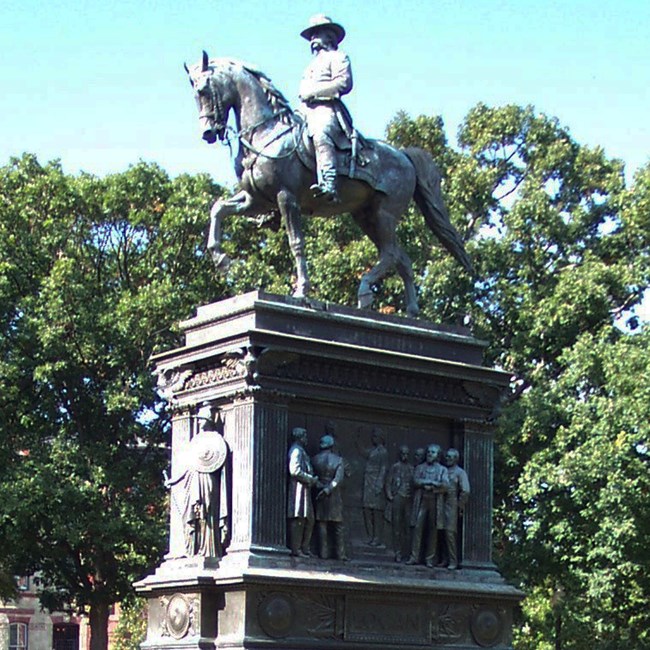
NPS PHOTO Faithful to Abraham Lincoln and the Union, John Logan courageously fought alongside Federal troops in 1861 at the First Battle of Bull Run (Manassas) in Virginia. After four years of service, Major General Logan proudly led the Union Army of the Tennessee along Pennsylvania Avenue in the 1865 Grand Review of the victorious Union armies. Once again a politician, Logan championed veterans’ rights as chairman of the powerful House Committee on Military Affairs, and as the 1884 Republican Nominee for Vice President of the United States. Logan’s great legacy emerges each May when this Nation recognizes all its fallen military heroes on Memorial Day. As Commander of the Grand Army of the Republic (GAR), a Union veterans organization, Logan issued General Order No. 11 in 1868, establishing May 30 as Decoration Day,
After the First World War, Decoration Day evolved into Memorial Day to honor every American who died in wartime service. In 1971, Congress changed the date from May 30 to the last Monday in May. On December 26, 1886, John A. Logan died. He laid in state in the U.S. Capitol rotunda and later was buried in Washington’s Soldiers’ Home National Cemetery. On April 9, 1901 President William McKinley officiated at the Logan Memorial dedication ceremony. The memorial took its place at the center of Iowa—later Logan—Circle. Unique among Washington’s equestrian tributes, with statue and main pedestal each cast in bronze, this memorial incorporates the visions of American sculptor Franklin Simmons and Logan’s widow, Mary. |
Last updated: April 10, 2015
